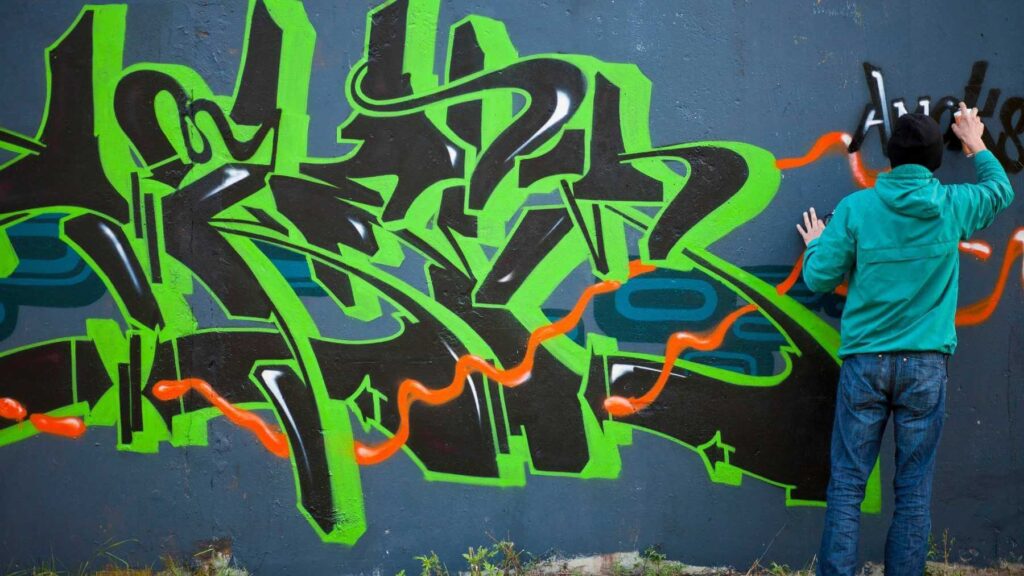What is graffiti?
Graffiti is an art form in which people write or paint on walls without the permission of the owners. It can be anything from simple written words to elaborate wall paintings. Graffiti has been around for centuries and can be traced back to the ancient times of Egypt, Greece, and the Roman Empire. Some artists may even use the name “graffiti” to describe a work of art. It is a creative way to express oneself, and is a growing and important part of society today.
The art form became popular in the late 1960s in New York. In the 1970s, graffiti became widespread in subway cars and other public spaces. The earliest graffiti artists were part of street gangs and worked in groups called ‘crews’. Novelist Norman Mailer and The New York Times were the first to use the term “graffiti,” and art galleries started to collect graffiti.
What are the types of graffiti?
There are several different types of graffiti, and each has its own style. One type is graffiti involving stencils. Stencils are essentially paper or cardboard shapes that a graffiti writer uses to create recognizable, stylized images. These images are then transferred to a surface using roll-on or spray paint. Many prominent graffiti artists use stencils, including Banksy and Shepard Fairey.
Another common style is character graffiti, based on cartoon characters. Some graffiti artists choose to paint cartoon characters next to other graffiti, while others prefer to focus on figurative art. Character graffiti, however, requires a higher level of creativity than ordinary graffiti.
What are the types of graffiti?
Graffiti comes in many different forms and styles. There are tags, throw ups, pieces, and murals. Tags, which are the simplest form of graffiti, are often just a person’s name written in an unusual style. Throw ups, on the other hand, are often more elaborate, and may include several colors. Pieces are the most intricate type of graffiti, and can take many hours to complete.
Some graffiti has a political context. For example, a tag that says “Have a nice day” might be a reference to a particular religion, or even an ethnic group. Graffiti that depicts a gang’s name is often considered racist, especially if it is placed on a building that houses asylum seekers.
Who is responsible for graffiti removal?
Graffiti removal is an expensive process that is often neglected, but a local business is often called in to remove the scribbles. Shropshire council has teamed up with a graffiti removal company to make the process as simple and cost-effective as possible. The new partnership means that graffiti removal can be done quicker and more efficiently, allowing the council to focus on other areas.
Graffiti is often seen as vandalism, and is considered a detriment to property values. Consequently, most governments have made it a crime to leave graffiti on public property. Often, graffiti is placed on public property, such as street signs and traffic signals. It is also placed on private property, like businesses, houses, walls, and fences.
What is the best way to remove graffiti?
Before you attempt graffiti removal, gather the materials you need. Plastic tarps or masking tape will protect surfaces you don’t want to clean, and you should wear gloves to protect your hands. You should also protect the surface with a protective coating to prevent the paint from being damaged by the graffiti.
Cleaning products containing active chemicals are available in many hardware stores. They will remove graffiti from walls and other surfaces, but may cause damage to the surface if used improperly. Additionally, the chemicals will strip the paint, which can be unsustainable and not environmentally friendly. It is a good idea to check with local hardware stores for the safest products and follow manufacturers’ safety guidelines.
Graffiti removal is an essential part of preventing vandalism and is now a common problem for businesses. The faster the graffiti is removed, the better. But if the graffiti cannot be removed completely, installing warning signs or security cameras will help keep it from coming back.











